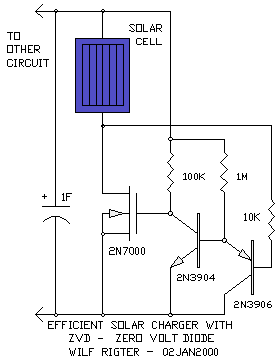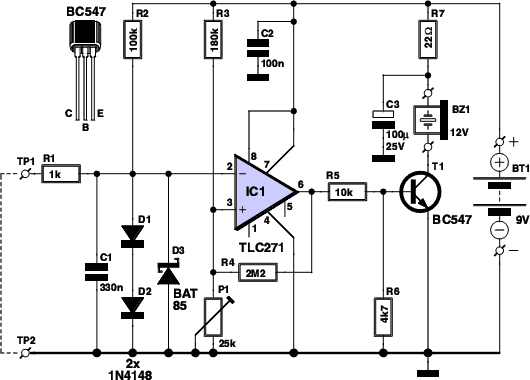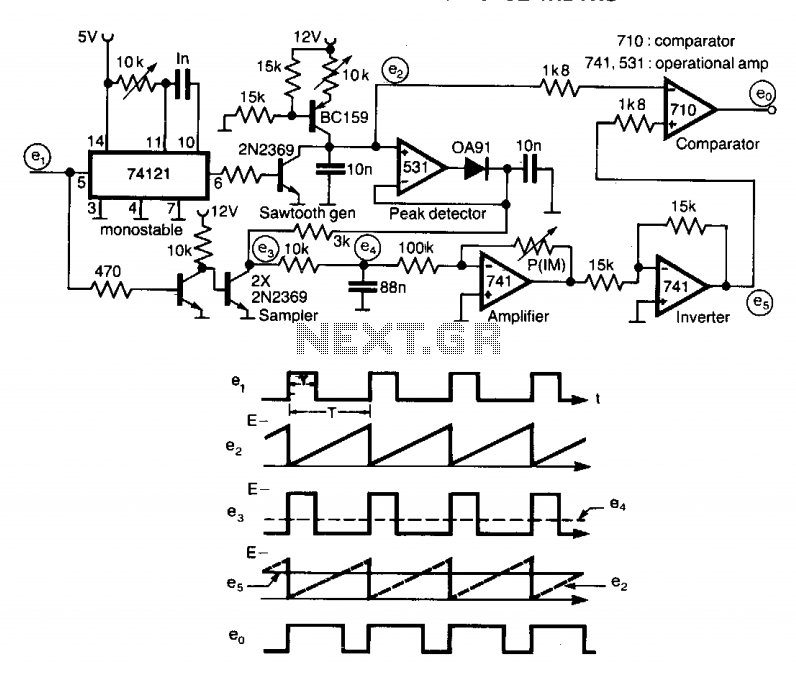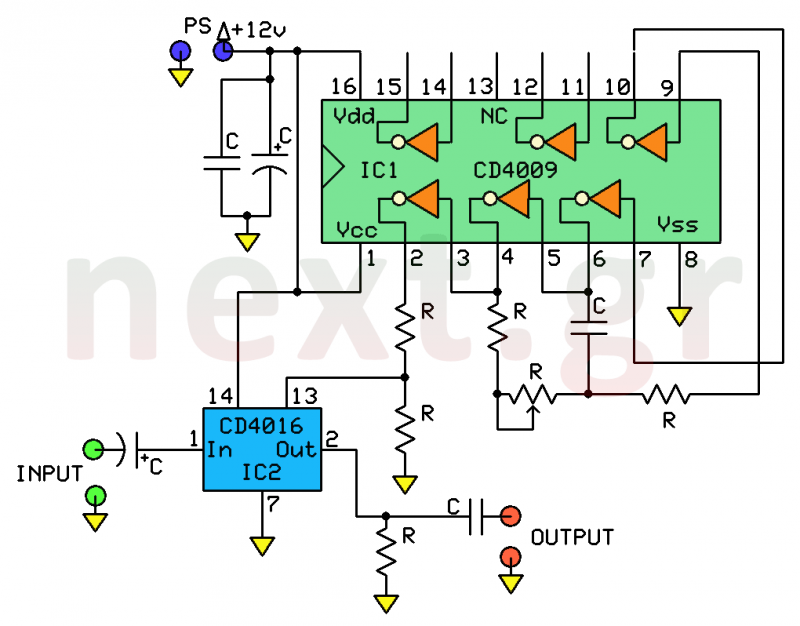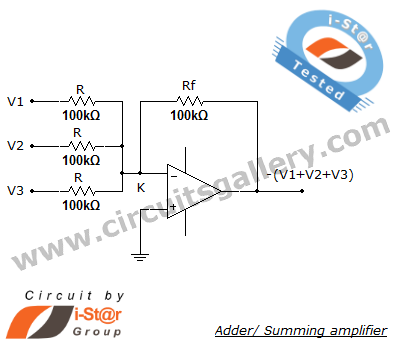
Automatic sprinkler controller circuit diagram 5
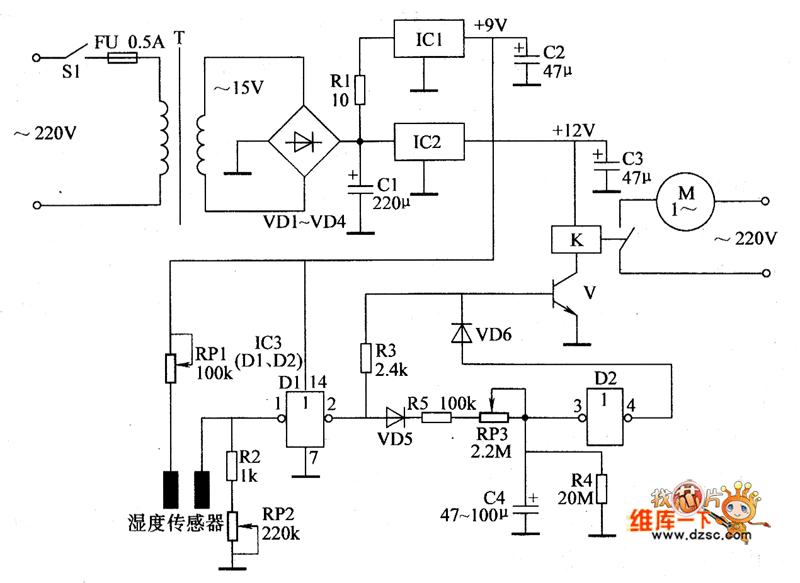
The automatic sprinkler controller circuit consists of a power supply circuit and a humidity measurement and control circuit, as illustrated in the accompanying figure. The power supply circuit includes a power transformer (T), rectifier diodes (VD1 to VD4), filter capacitors (C1 to C3), and three-terminal integrated regulators (IC1, IC2, etc.). The humidity measurement and control circuit is responsible for monitoring the moisture levels and managing the operation of the sprinkler system.
The automatic sprinkler controller circuit is designed to efficiently manage irrigation based on soil moisture levels. The power supply section converts the AC voltage from the mains to a regulated DC voltage suitable for powering the control circuitry. The transformer steps down the voltage, while the rectifier diodes convert the AC signal to DC. The filter capacitors smooth out the rectified output to reduce voltage ripple, ensuring stable operation of the integrated regulators.
The integrated regulators (IC1, IC2) provide the necessary voltage levels for the microcontroller and other components within the circuit. The humidity measurement section typically employs a moisture sensor that detects the soil moisture content. The sensor outputs a voltage signal proportional to the moisture level, which is then fed into an analog-to-digital converter (ADC) integrated within a microcontroller.
The microcontroller processes the ADC output and compares it against predefined moisture thresholds. If the soil is found to be dry, the microcontroller activates the sprinkler system by energizing a relay or a transistor switch connected to the water supply. Conversely, if the soil moisture is adequate, the microcontroller maintains the sprinkler system in an off state, conserving water and preventing over-irrigation.
This circuit can be enhanced with additional features such as a timer function, manual override options, or integration with weather data to optimize irrigation schedules. The overall design emphasizes energy efficiency, reliability, and adaptability to varying environmental conditions, making it suitable for both residential and agricultural applications.The automatic sprinkler controller circuit is composed of the power supply circuit and humidity measurement and control circuit, and the circuit is shown as the Figure. Power supply circuit is composed of the power transformer T, rectifier diodes VD1 ~ VD4, filter capacitors C1 ~ C3 and three-terminal integrated regulators ICl, IC2 and so on.
Humidity measur.. 🔗 External reference
The automatic sprinkler controller circuit is designed to efficiently manage irrigation based on soil moisture levels. The power supply section converts the AC voltage from the mains to a regulated DC voltage suitable for powering the control circuitry. The transformer steps down the voltage, while the rectifier diodes convert the AC signal to DC. The filter capacitors smooth out the rectified output to reduce voltage ripple, ensuring stable operation of the integrated regulators.
The integrated regulators (IC1, IC2) provide the necessary voltage levels for the microcontroller and other components within the circuit. The humidity measurement section typically employs a moisture sensor that detects the soil moisture content. The sensor outputs a voltage signal proportional to the moisture level, which is then fed into an analog-to-digital converter (ADC) integrated within a microcontroller.
The microcontroller processes the ADC output and compares it against predefined moisture thresholds. If the soil is found to be dry, the microcontroller activates the sprinkler system by energizing a relay or a transistor switch connected to the water supply. Conversely, if the soil moisture is adequate, the microcontroller maintains the sprinkler system in an off state, conserving water and preventing over-irrigation.
This circuit can be enhanced with additional features such as a timer function, manual override options, or integration with weather data to optimize irrigation schedules. The overall design emphasizes energy efficiency, reliability, and adaptability to varying environmental conditions, making it suitable for both residential and agricultural applications.The automatic sprinkler controller circuit is composed of the power supply circuit and humidity measurement and control circuit, and the circuit is shown as the Figure. Power supply circuit is composed of the power transformer T, rectifier diodes VD1 ~ VD4, filter capacitors C1 ~ C3 and three-terminal integrated regulators ICl, IC2 and so on.
Humidity measur.. 🔗 External reference
